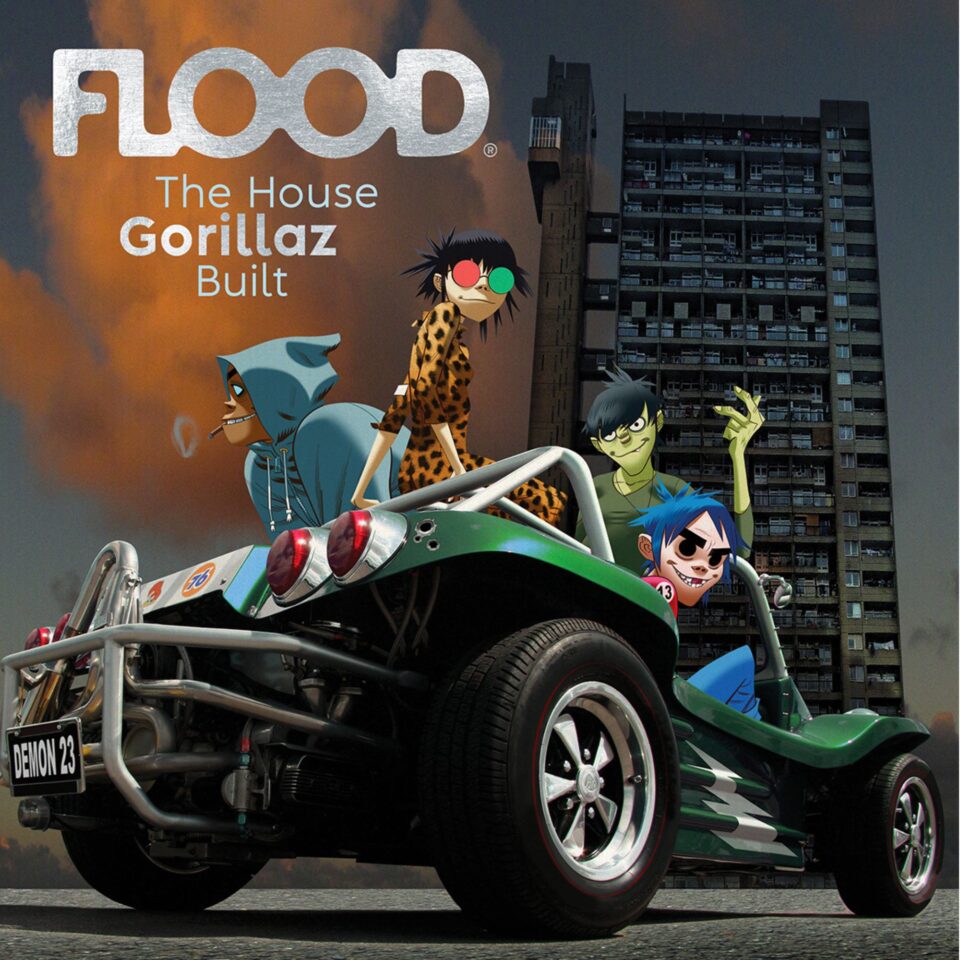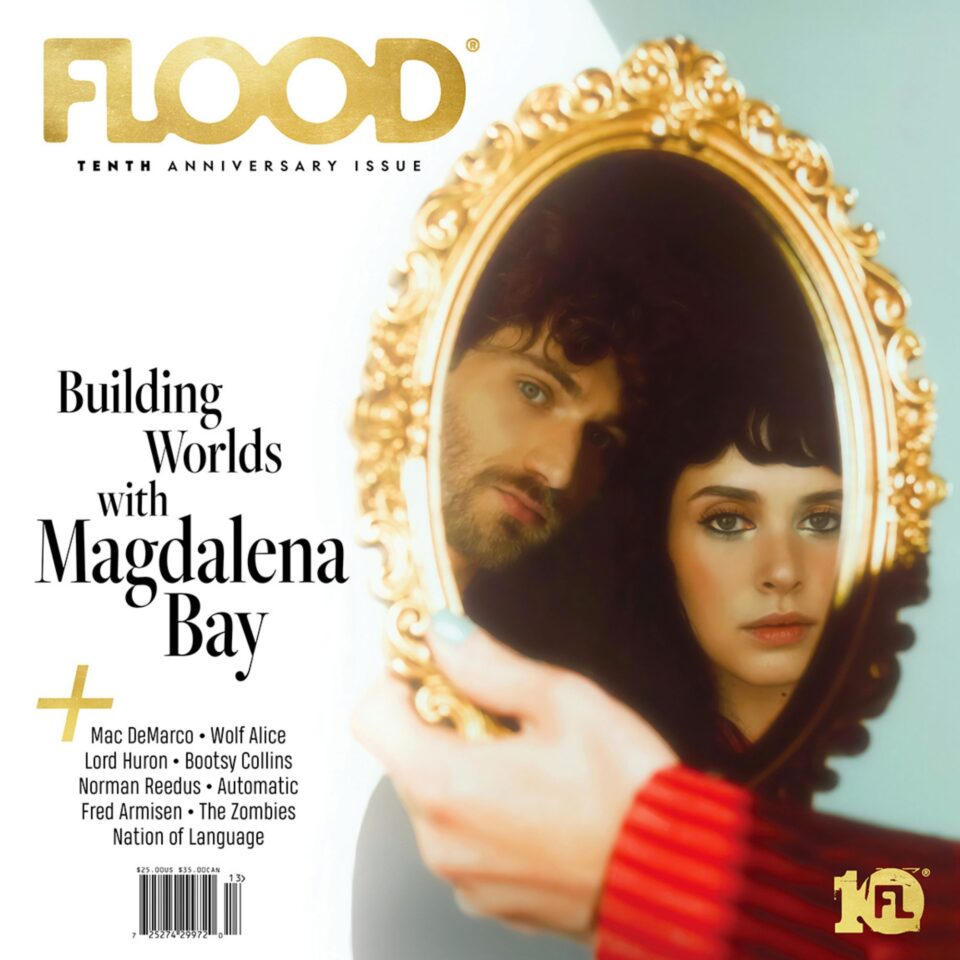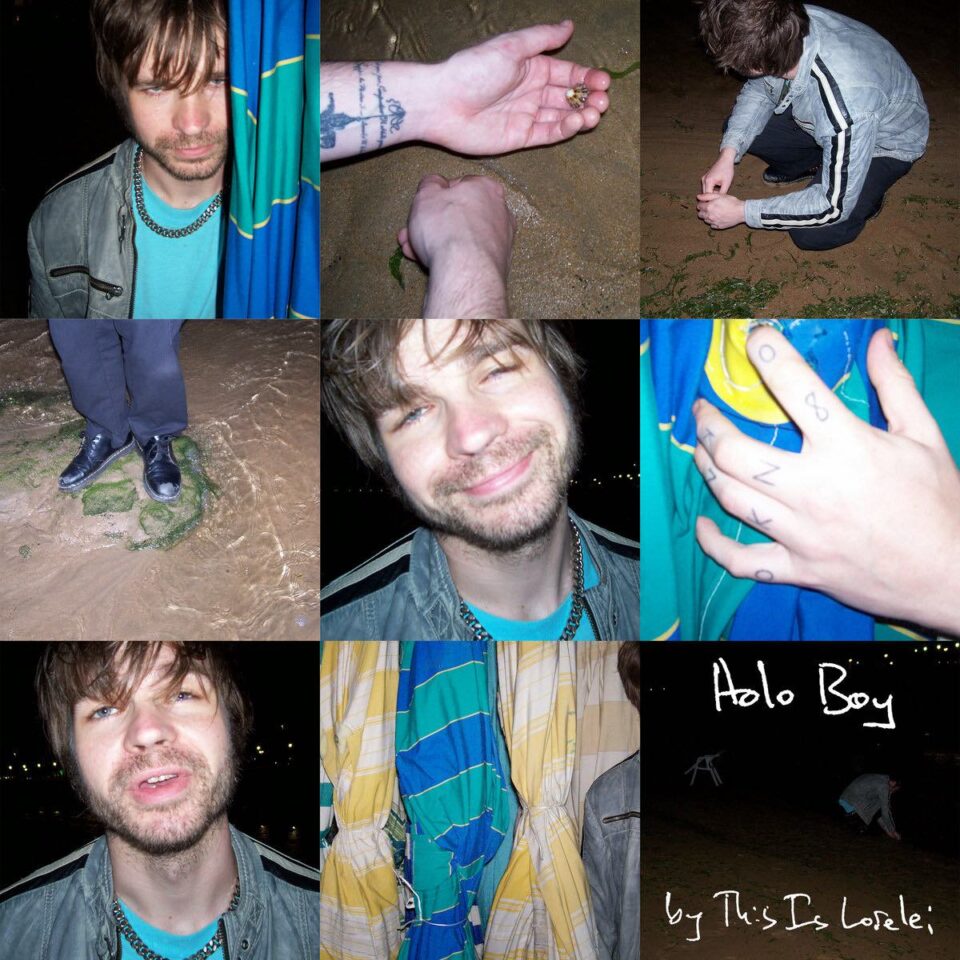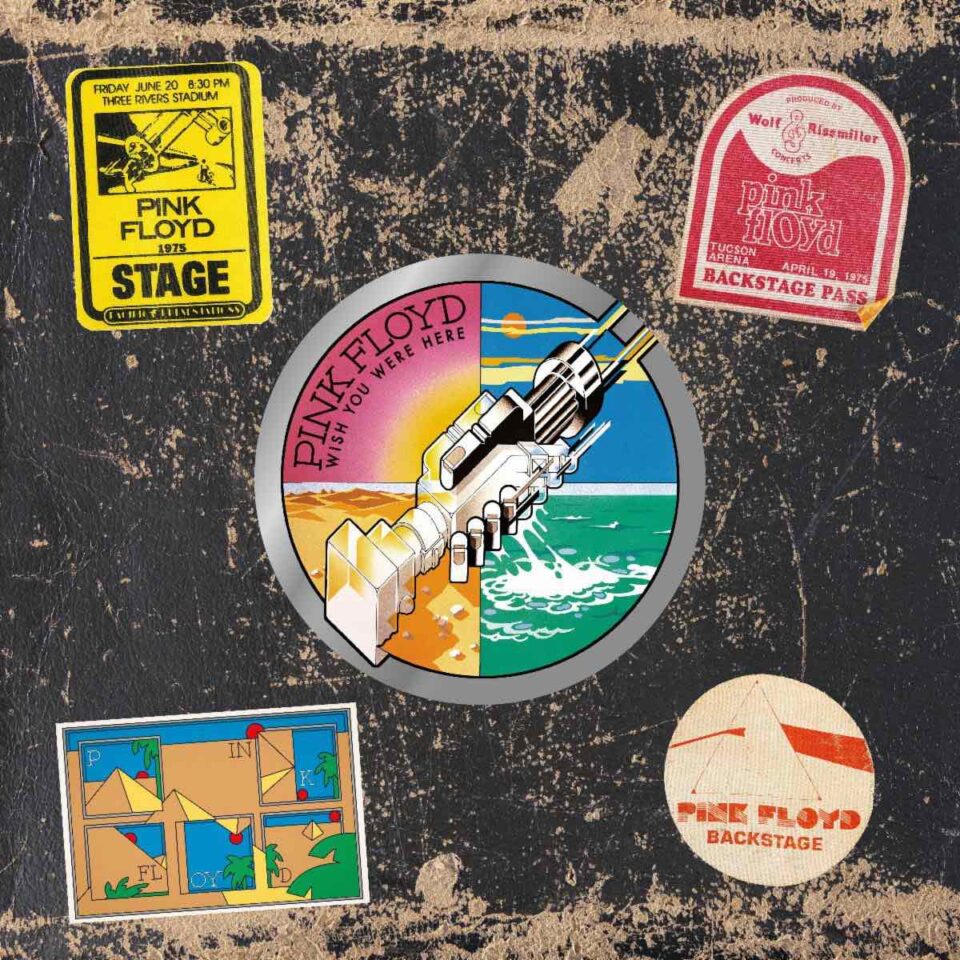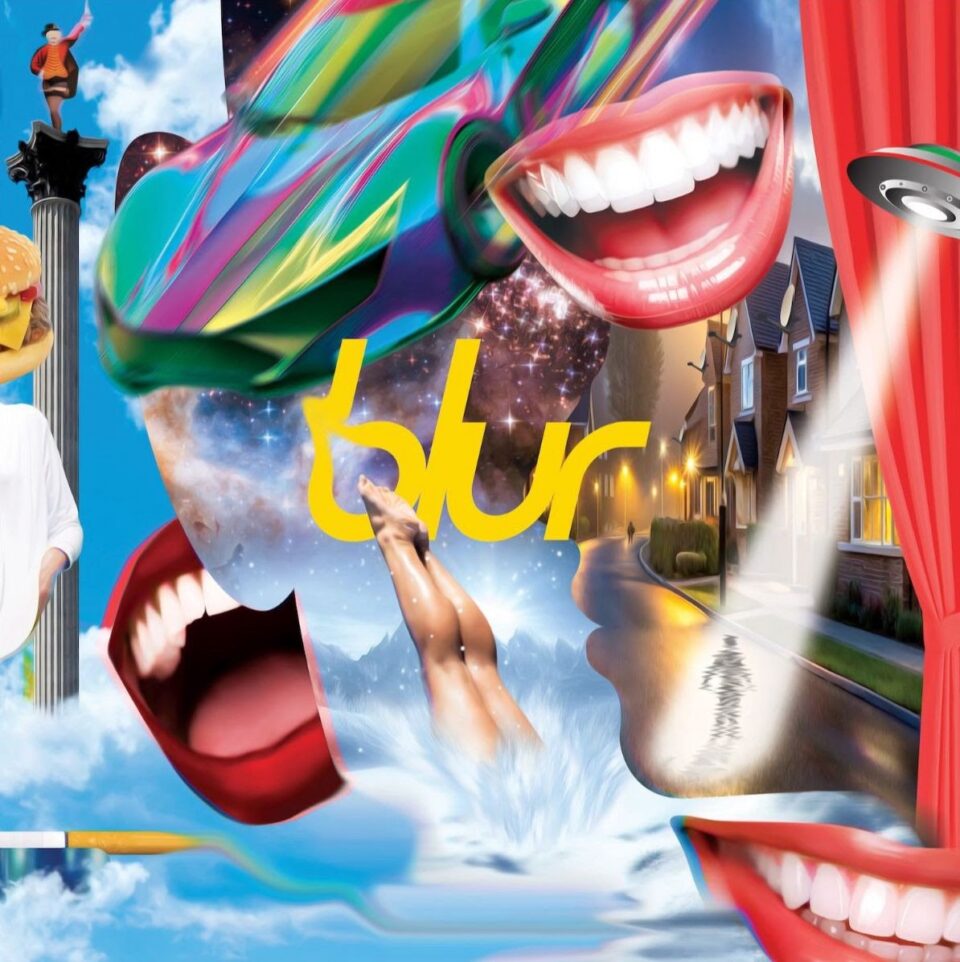For over a decade now, Alex Somers has been writing chilling ambient music alongside his long-time creative partner Jónsi, as well as solo recordings that have soundtracked emotional moments in film and TV, including scores for Black Mirror, Honey Boy, and the recent Taylor Swift doc Miss Americana. But today, the Baltimore-born and LA-based composer is finally sharing a double-dose of solo LPs unattached to any visual media (aside from the vignettes filmed for a few of the record’s tracks).
Siblings and Siblings 2 continue the stark, minimalist post-rock soundscapes of his past work that shift back and forth between cozy and apocalyptic. The majority of the records’ inscrutably blended soundscape feels unbearably lonely—though listening to Somers describe the recording process, and experiencing the second-hand glee he emits when discussing the project, paints a very different picture of the artist. “I’m so sorry I ramble so much, but if there’s one thing I love in life it’s recording sounds and music and turning nothing into something,” he explains. “It was fun to remember this time.”
Below, Somers walked us through Siblings, the first of the two albums he’s sharing today. From the collaborations that made the record possible, to the experimental techniques that lent themselves to some of the record’s most bizarre sounds, to Somers’ tyrannosaurus piano posture, read on for the songwriter’s commentary.
This very old melody has been following me around for years. I would hear it at random moments throughout my life knowing pretty little about where it came from, but I always loved the equal parts horror and tenderness of it. One day, after hearing it randomly, I decided to track down its origin out of curiosity. This is the original version that is sung by Isla Cameron at the opening of the 1961 black-and-white horror film The Innocents. It’s such a beautiful and haunted way to open the film and I knew I had to sample this version…
After sampling it from the film I felt drawn to the final lines, “Oh willow I die,” and I made a rhythmic loop of those phases repeating, and started writing a piece of music on top of the voice. This piece became the following song, “Oh Willow I Die.” After finishing “Oh Willow I Die” I muted the voice sample and the song lived like that for a few years. Eventually, I finished that song and decided to give it a nice long intro by stretching out the original sample I had previously made to create this album intro. I felt that instead of marrying the sample with my music it was more striking to separate them into two distinct halves—first the call of the lonely voice, then the answer of the music.
2. “Oh Willow I Die”
I kind of just explained the origin of this song above, but I’d like to mention the delicious double bass sound/performance that opens the song. It’s a few layers of double bass played by Borgar Magnason, including one layer pitched down an octave and kept mono for balance. Borgar is an amazing bass player and is featured throughout this album. He’s so sensitive and plays with the best bow sound I’ve ever heard! He’s truly a joy to record and collaborate with! This song is kind of a murky, from-the-bottom-of-a-wishing-well-feeling for me. It was really fun to build, add, and destroy new layers along the way.
The low bass drums were recorded in Helsinki with my dear friend Samuli Kosminen. He has this very cool trick of playing a bass drum mounted upwards with a huge soft mallet. He places a ribbon microphone very close to the drum and gently taps the drum with the soft mallet and, in part because of the proximity effect of the ribbon mic, and the way he tunes his drums, it creates this huge boom and weird resonance that you can’t otherwise create. He’s so special, and this is just one example of Samuli finding new sounds and inventing sonic worlds to live inside. The garbled up vocals are just me singing poorly to keep the bottom of a wishing well vibe [laughs].
3. “Deathbed”
Oh, this song also begins with some nice double bass moments. The story behind this is kinda funny and very typical of me [laughs]. One day I was recording something for this song and I was at my old studio with my adorable dog, Atlas, and he had this squeeze toy. I noticed that as he was chewing on the toy, it had stopped making the squeak sound, and I really liked the sound of the air moving in and out of it now that there was no more squeak. So I snatched his toy, asked him to be quiet, and recorded a live take of me playing the toy in beat to the song. Then, when listening back, I released that the breathing toy sound sounded so much nicer when I slowed it down. So I decided to follow the wisdom in the toy and slow the entire song down eight semitones. That included the piano, celeste, and string section that I had already recorded. Then in its new, slower form I recorded the double bass and the vocals.
It honestly sounded so much better slowed down. So for the double bass part I just asked Borgar to mimic the breathing sound of the toy by hitting/scraping his bass with his bow. He did a live take through the whole song, and I blended the sounds of the dog toy and the double bass together to create the breath-like sound you hear.
Last but not least is this sad little celeste outro. My celeste sounds so harsh and has so many overtones that the only way to make it sound good is by recording it with a ribbon mic placed across the room…like, way across the room, so that’s what I did, and that’s the nice space feeling around that sound. Bonus points if you can hear Atlas’s paws click-clacking across the wooden floor during the intro of this song!
4. “Between Us”
“Between Us” is a very simple, cyclical piano song. It’s a cycle of thirteen chords that just repeat over and over, but since everything is played live there are always small permutations and evolutions in the voicing and layers coming in and out. The song was born from a tiny sample from my VSS-30 that I played my guitar amplifier with the spring reverb all the way up. Then I found the piano chords which fit over top of that lil’ sampler environment. In the final version, my really good friend Ólafur Björn Ólafsson is playing the piano. He has the most amazing touch, and knows how to play so much better than me. My piano technique has affectionately been dubbed the “T-Rex” way of playing by my friend Nico Muhly—and he’s right, I’m pretty bad [laughs]! It was really crucial and felt just right as soon as Ólafur lent his playing to it.
5. “Tell Star (For Joe Meek)”
This song wakes you up in case you were drifting off there. Similar to my process on “Oh Willow I Die,” this song was born around a vocal snippet I sampled from one of my all-time favorite songs: “Telstar” by Joe Meek, my all-time favorite producer. When I first heard Joe Meek’s work I went down a rabbit hole and became obsessed with him. I read books and bought box sets so I could hear as many of his recordings as I could. What an amazing and curious mind! It’s a shame that his story ends in tragedy with a murder-suicide.
6. “Dim”
Another simple, cyclical song. I wrote this one on our harmonium pump organ and later added the strings and other overdubs. It’s another moment where Borgar’s double bass playing really shines. It’s juicy! Also, the other strings players really shine here, too, my very old friends and close collaborators from way back—the same lovely girls who played all of the strings on Riceboy Sleeps. I remember making them a cake as a trade for the session recorded in my then–living room. They are angels and truly incredible and intuitive musicians, and I feel so lucky to have made so much music with them over the years. María Huld Markan Sigfúsdóttir and Hildur Ársælsdóttir on violin, Edda Rún Ólafsdóttir on viola, and Sólrún Sumarliðadóttir on cello. They contribute so much to the feeling and atmosphere of this album and I love them all.
7. “Oh No”
This intro happened when I spent ten days on a tiny island off the coast of Helsinki called Suomenlinna. I was there recording with wizard percussionist Samuli Kosminen. Samuli lives there with his family and it’s truly a dream—Google it. Also, go there and work with Samuli in his studio if you can. He is a true one-of-a-kind and is one of my favorite people on earth.
If you’re a nerd you might notice that the outro of this song goes completely out of phase. That was kind of by design. I mixed a version of this song where it was complexly and utterly distorted for fun, and I discovered that at the very end I loved how it sounded, so I spliced together the normal mix and the fucked-up mix to let the song feel all off balance just for the very ending.
8. “Kimblings”
“Kimblings.” This is a made up word. Jónsi used to not know how to say “siblings” properly—he would often say “kimblings” and I just loved it. Now it’s a song title [laughs]. Again, Ólafur playing the pianos in this song felt just right. Forceful, but also forgiving somehow. The outro is three takes of him doing this thing we called flutter piano. I wanted to capture as much of the mechanics of the piano as possible so it always feels like a struggle between the physical piano sound and the actual notes blurring out. I also pitched down one of the takes an octave so it sounds a little odd—I liked that.
9. “Dreaming Boys”
This is just a little breath on the album—a connecting thread. It’s a treated field recording made in 1955 by UNESCO of two children singing together in an unusually quilted way.
10. “Avalanche”
Lots of cozy textured string layers from María, Hildur, Edda, and Sólrún here. I asked Sólrún to tune her low C string on the cello to the lowest possible note until it would nearly fall off. Then she played the bass line and it rattled and sounded so unstable and I loved that! I think I remember asking her to play that part as if her arm were broken [laughs]. She’s amazing and we had fun finding that sound together. My brother also added some really nice sound design of an actual avalanche in the second half of this song. We blended it with the music so it’s more felt than heard.
11. “One”
Honestly, I’m only really here for the bowed vibraphone cassette warble in the second half.
12. “Whirlpool”
This one is kinda embarrassing. It’s the little makeshift choir voices I arranged for “Between Us” returning on their own and in a different environment than they were back when they appeared in “Between Us.” Last year I scored the Taylor Swift documentary and our amazing director Lana Wilson asked if we could use this song in the film. We found a nice scene for it, and Lana loved it and she later told me that Taylor Swift loved it too, but who knows!
13. “Looking After”
This song has been slowed down an entire octave. If you’re curious to hear what it sounded like the way I originally wrote and recorded it, then listen to “Following After,” which is track one on this album’s sibling album called Siblings 2. This was one of the most fun and memorable moments from the entire album-making experience. After we had recorded the main chord swells of the piece I was just pacing around and humming these high notes and I couldn’t stop doing it, so I asked the girls if we could do three takes of them playing what I was humming, and after we all made fun of my humming we gave it a try… So the high strings that you hear doing this little bend-y thing are the end result of this experiment.
I asked the girls to unplug their headphones so they couldn’t hear the song and I told them which notes I wanted them to drone on and as I knelt down and bent my hands and head they would bend the pitch with me as they played. I was in the control room of the swimming pool studio looking down at them through the glass, but only I could hear the song so I knew where I wanted the high string drone to bend, and they were just watching me and bending with me. It was so, so fun and human and silly! We did three takes of these high-pitched drones where I would visually conduct them on when to bend and by how much and for how long. It was really neat because the idea felt abstract at first, but it turned out exactly as I heard it in my head—that is a huge testament to how amazing and intuitive María, Hildur, Edda and Sólrún are! There’s nothing I love more than a slow-motion pitch bend.


